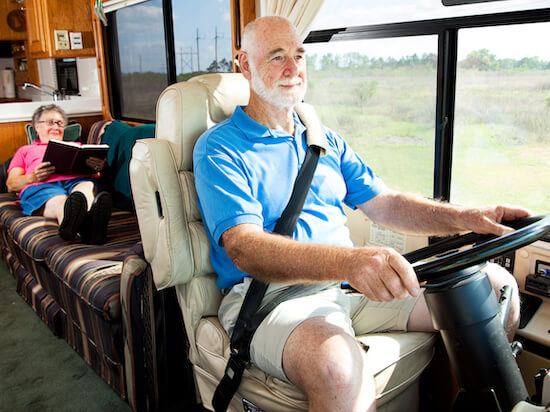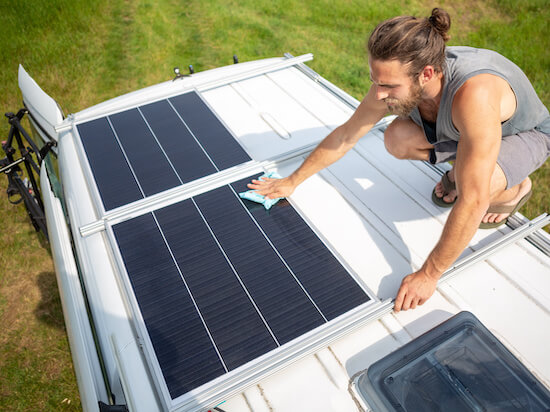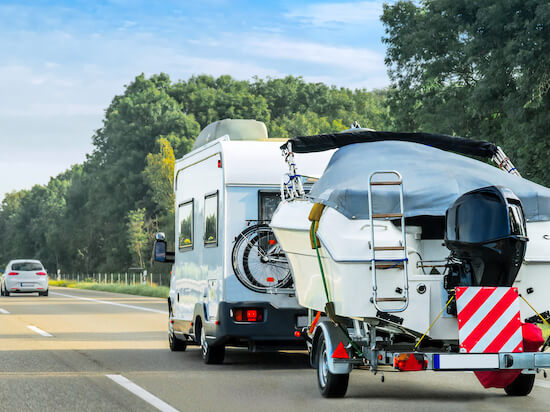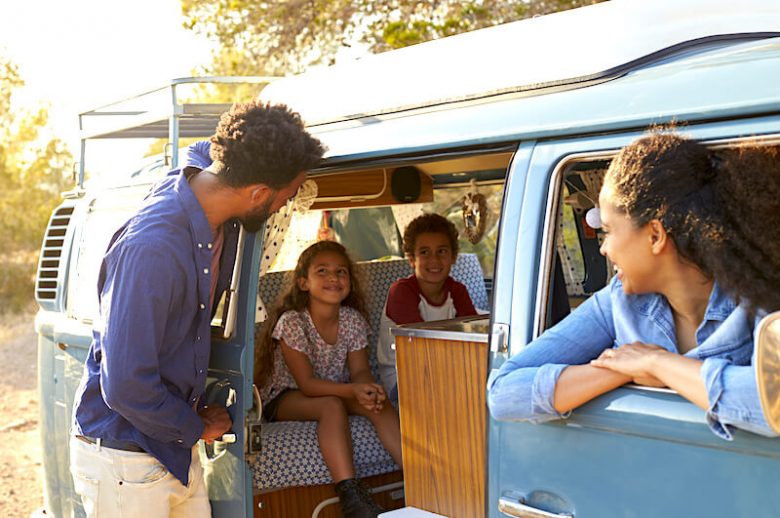The pandemic has certainly changed the way we live. Today’s travelers are seeking out road trip itineraries to help the stay safe and more socially distanced. Even as the nation recovers and vaccines are becoming more widespread, lifestyle changes made during the early stay-at-home orders and city-wide lockdowns are lingering. There are plenty more enjoying the great outdoors, more first-time campers, and RVers too.
Use eTags© to Quickly Complete Your DMV Service. Renewals, Title Transfers and More, All Online!

Over 11 million families in the U.S. own a recreational vehicle
RV ownership is at a record high these days with 11.2 million households owning an RV in 2021. That’s 26% more than in the past decade. The RV Industry Association reported total RV shipments in August this year were at 52,819 units, an increase of 33.8% compared to August 2020.
430,412 recreational vehicles sold in 2020 in the U.S.
Specifically, Class B motorhomes including camper vans and touring coaches, shipped 1,442 units in August. That’s a 29% increase over the previous record set in March 2021. When looking at the entire year of 2020, there were 430,412 units recreation vehicle shipments, surpassing 2019 by 6%. This despite a two-month RV industry shutdown due to the Covid-19 pandemic.
One million Americans live full-time on an RV
As the #vanlife keeps gaining momentum, more travelers are choosing to skip crowded airports, cramped flights, and not-so-clean hotels. Even rentals are popular among RVers. A week-long standard RV rental in Los Angeles, California, costs about $124 a night. It can sleep five people, and is equipped with gas cooktop, refrigerator and even a shower.

According to the RV Industry Association, there are about a million Americans living full time in recreational vehicles. Some are work-from-home nomads, some retirees, others are traveling nurses, and more. But if if you’ve never driven a recreational vehicle, or have but don’t call yourself an experienced driver just yet, keep reading for driving safety tips.
Don’t forget to check the roof of your RV, since UV and water deteriorate the sealant over time. If there’s white residue, that’s kind of chalk-like, you probably have to reseal the roof
Prepare for your RV trip
If you’re the proud owner of a recreational vehicle, you probably have scheduled maintenance. But before you head out on your next road trip, you want make sure your appliances are working, your oil change is done, and wheel bearing conditions are good. Check tires, and your hitch and tow equipment if you have any. Look for corrosion and loose parts. Remember the paperwork. Your RV certificate of title for proof of ownership along with your registration.
Preparing for your trip also means to plan your route. It doesn’t have to be detailed, but make sure you know the safest route to take, check out secure rest stops along the way, and reserve camping sites or space in national parks beforehand if that’s’ where you’re headed. Research is even more crucial during national holidays, and warmer months from May to September.
Check the outside of the RV: steps, sliding doors, awnings, and windows to see if it’s all operational

Practice makes perfect
Recreational vehicles and motorhomes of all types are definitely bigger in size. If your regular commute is in a compact sedan, driving an RV won’t feel natural. Hence, the extra practice. Driving an RV means navigating a taller and broader vehicle; one that’s more susceptible to high winds.
Braking is one of the top concern for new RV drivers, so consider this: it’s recommended to stay at least 2 seconds behind on a regular car, so in a recreational, you should probably give yourself about 10 second. Turning is also particularly tricky with a recreational vehicle or motorhome, since wider turns are needed. Right turns are even more challenging since they place your RV right next to the curb. Keep your eye on the rear-view mirrors and stay as close as possible to your center lane

Practice, practice, practice! Work on maneuvering the vehicle, taking wider turns, learn how to spot your pivot point and tail swing, improve your parking technique, learn how to use the brakes properly, and become more of a defensive driver. For formal lessons, you can go to an RV driving school.
An RV GPS can help you avoid bridges and overpasses that your RV is too big for
A few extra tips on RV driving safety
• If you need to make wide turns, don’t get pressured by traffic around you. Take your time instead.
• Try not to drive in bad weather conditions such as heavy rains, snow storms, or high winds
• Always be aware of your position in a lane, using your side mirrors can help to check how close the RVs back tires are to the lane marker
• Pay extra attention to traffic signs, especially the yellow ones which will alert you of different landscapes you’ll be approaching which can impact your drive. For example, if you encounter a hill, you have to downshift to keep your RV engine cool to prevent it from overheating

• If you choose to go camping with your recreational vehicle, remember to check for overhanging branches, electric lines, tall trees
• Avoid shoulder drop-offs to prevent tire damage, but if you do don’t jerk the steering wheel to get your RV back on the road, instead keep driving slowly to redirect the RV
• If you’re towing, don’t forget backing up turns the trailer in the opposite direction of the steering wheel.
For registration services and title transfers for RVs and motorhomes, check eTags online.
